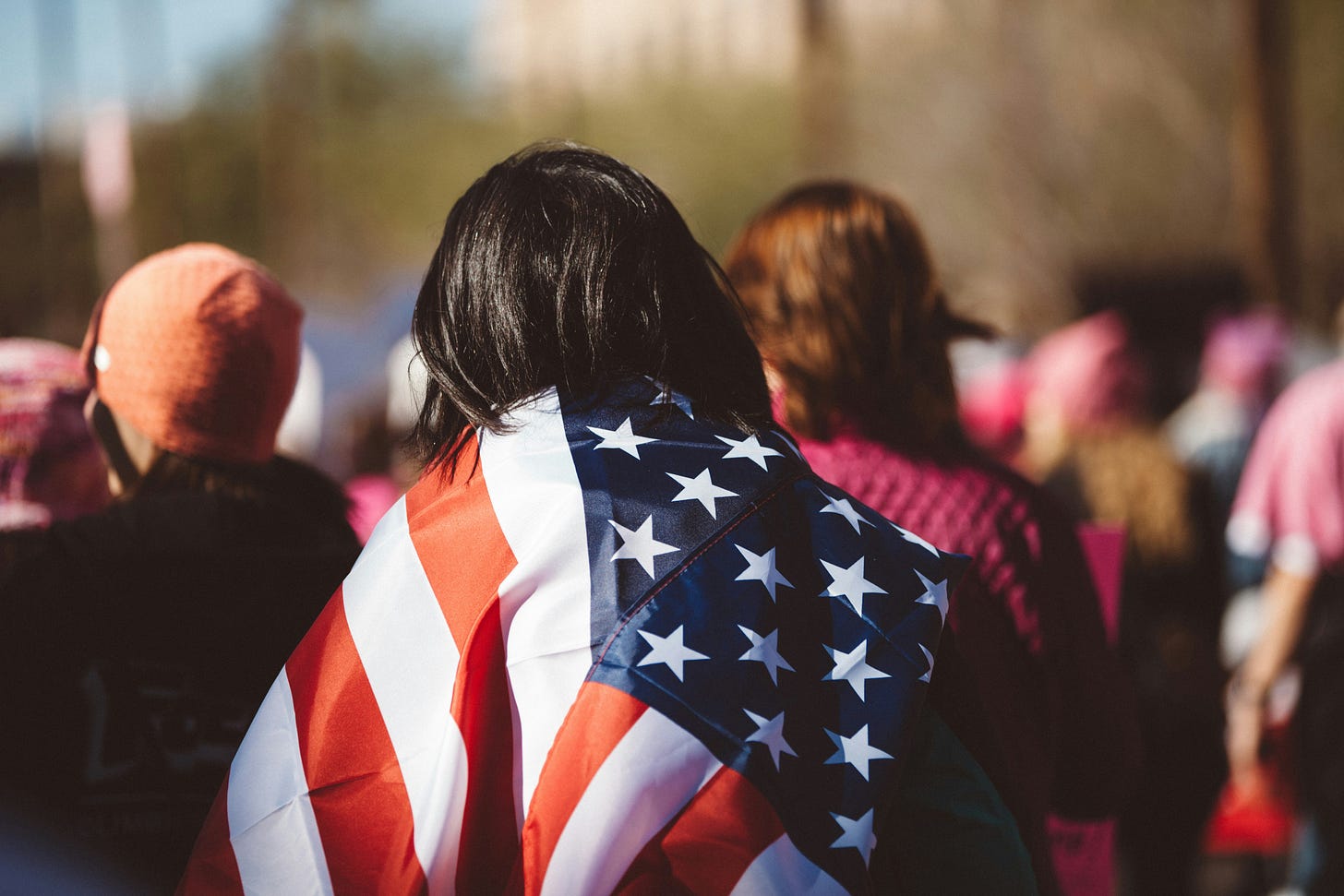Meeting the moment, and each other
How public media can rebuild trust and foster belonging in the communities we serve
Your responses to the last OIGO made one thing clear: we’re all feeling this moment deeply; and searching urgently for practical, grounded, and local ways to respond.
This is an extraordinarily difficult time for Latino communities, and for public media. A recent NPR investigation on the masking of agents and cars shows but one facet of the problem. ICE enforcement dominates headlines, stoking fear of racial profiling and family separation. People are living with daily anxiety. As the New York Times editorial board wrote, the brutality toward undocumented immigrants and the unfairness toward American citizens caught in its wake is an affront to decency.
Audiences are yearning for something increasingly rare: a shared reality built on safety and respect.
Polarization defines public life, misinformation is multiplying, and social media is fraying community ties. Meanwhile, media itself faces devastating pressures: newsrooms are shrinking, public broadcasters are cutting back, and the training grounds for young journalists are vanishing. Still, the work of public media has never been more consequential, or more tested.
After the last OIGO, KCSB’s Jennifer Kiser told me something that’s stayed with me: Our journalism is essential, but so is trust between people. It’s true. Information alone isn’t enough in this moment. Public media can do more than report the news; we can help rebuild the sense of community that holds neighbors together.
Why showing up matters
When people fear being targeted, or their neighbors being taken away, institutions like ours must be steady sources of reassurance and truth. Public media’s responsibility isn’t just to inform. It’s to help re-weave the civic fabric that’s coming apart.
The next election cycle won’t just test our institutions. It will test our capacity for empathy. What communities are asking of their stations, especially those under duress, is simple and profound: Show us you care enough to listen. Help others to see our experience. Stand with us.
The question is: will we meet that call?
The Neighbor Test
Here’s a simple, powerful measure for public media in the political moment ahead.
Would your coverage and tone make your neighbors—including Latino neighbors and new immigrants—feel proud to call your station theirs? If not, what needs to change?
Passing the Neighbor Test isn’t just about accuracy. It’s about empathy. It’s journalism that sounds like it was made by people who live here too.
It moves beyond “Who’s winning?” to ask “Who’s being heard, and who’s afraid?”
It means sharing not only what divides us but what genuinely binds us: our parks, the panadería on the corner, the quiet collective sigh when hard news hits.
Trust is built in these small, human moments. When a reporter pronounces a town’s name correctly, when a story reflects dignity instead of caricature, when neighbors hear each other through the static of national politics.
The question now isn’t “Why should we do this?” but “How?”
The answer lies in shifting our mindset from content creation to community building.
Ways to reach, serve and connect
These ideas are offered in that same spirit, to give you tangible ways to build connection on-air, online and in your neighborhoods.
So, I share critical shifts inspired by peers and partners that can help your efforts, no matter how big or small.
Breaking down proximity
The coverage that builds deep trust today isn’t obsessed with the spectacle of politics, but rooted in the impact of policy. Families want to know how decisions shape their lives: their status, their schools, their ability to care for a parent or seek citizenship. They want people they like and believe in to help them understand.
The strongest stories now start on the ground, long before they ever become a segment. At KQED, we’ve begun presenting reporters not just as experts but as neighbors. That’s the spirit behind Trusted Voice Content, reminding audiences that we feel these stories too, and that the best information often comes from those living the experience.
Presenting immigration coverage, and journalism on any topic, can be done in ways that make both the stories and the journalists behind them more relatable, fostering genuine human connection.
From neutrality to neighborliness
These moments always stir the old debate about objectivity. But serving everyone doesn’t mean standing apart. It means standing with.
Organizations like Avanza model this beautifully. They meet people in churches, libraries, and centros comunitarios—spaces where journalism becomes a shared act of curiosity. These aren’t just events. They’re acts of belonging. Such endeavors are reminders that public media’s work is rooted in the public itself.
Broadcast to bridgework
The most sustainable path forward is not to report to people, but to build with them. That means re-imagining public media as civic bridgework connecting journalists, residents and institutions.
At WVIA, a bilingual advisory board* led by Vicki Austin has helped the organization serve a growing audience more authentically. When the team discussed its community survey, the advisory board offered a perspective, suggesting two queries:
“How has WVIA helped you feel connected?”
“How has WVIA created a sense of belonging for you?”
Those questions echo the craving for human connection as well as the Neighbor Test by measuring impact not by reach, but by relationship. And progress is happening. One board member even said they felt proud to live where their station listened. That’s the future worth striving for.
Closer, not louder
Meeting a moment defined by fear, division, and anxiety doesn’t require us to reinvent our mission. It calls us back to its essence: service and empathy.
We don’t need to shout to be heard. We need to listen to be trusted.
Public media’s job now is to make that trust visible through our presence, our partnerships and our tone. The work ahead is about rebuilding human connection and showing that public media staff have the capacity for care that audiences are desperate to see.
The coming months may be volatile, but they can also be transformative. While the country wrestles with division, public media can quietly restore belonging… one story, one act of listening, one neighbor at a time. 🟢
[* = I’m fortunate enough to participate remotely on WVIA’s bilingual advisory board.]
Cafecito: stories to discuss ☕
New immigration resource. The National Association of Hispanic Journalists has released the 2025 edition of the Cultural Competence Handbook, a guide for covering immigration and identity. 📖 Nieman Lab shares the details.
New Latino data. Pew Research Center has released new findings on the growth of the Latine population in the United States. 🗂️ A rapidly growing group, it’s also very young and mostly U.S.-born.
Voter shifts. Post-Election Day journalism features a lot of analysis of the Hispanic vote. ✍🏽 Vox and Newsweek are among those interviewing election strategists about data to watch in the midterms.
“Meaning accrues in duration.” Speaking of demographics, and relevant to public media, Ken Burns argues on Mixed Signals that Gen Z doesn’t fear longform content and documentaries as much as we think. 🎞️
Community reporting and AI. I also write about AI and am tracking how tools are being used for service to Spanish-speaking communities. ⌨️ If you’re exploring too, the American Journalism Project just released a new resource.
El radar: try this 📡
See how the time is sparking Latinx political engagement. The U.S. immigration situation is prompting much reflection and action. WUNC and Virginia Public Media both look at one outcome: the growing number of Latino/a residents running for public office. ☑️ With midterms next year, this may be a story to watch.
And infrastructure. Nebraska Public Media highlights the expansion of an Omaha Latino center to serve increasing local needs. 🏢 Is this happening near you too?
Track in-person voting effects. Also related, Election Day is done for now, but CalMatters (via LAist) recently offered an investigation of how ICE enforcement actions could scare Latinos away from future polls. 👀
Examine ways local Hispanic businesses are attracting customers right now. The Oregon Capital Chronicle (via OPB) asked area business owners serving the community how they’re attracting customers who may be afraid of ICE enforcement. ⛶ Sources also talked about ways they’re trying to make customers feel safe enough to shop.
Document clashes between ICE protesters and agents. From Beyond the Border, San Diego residents who followed an ICE officer and the police stop that followed; and an Oaklandside story on an individual shot after reportedly accelerating a rental truck at officers are but two of what are many stories around the country. 🚓
Note support for Latine survivors. For Domestic Violence Awareness Month, WORT sat down with a local nonprofit supporting Hispanic survivors in navigating the justice system and connecting them to services. 📞
Highlight the healing potential of art. Arizona PBS looked at a local nonprofit’s efforts at using art to prompt dialogue among Latine residents. 🖼️
The next OIGO arrives Nov. 21. Northwest Public Broadcasting’s Johanna Bejarano sits down with you to discuss her work in sharing the stories of Washington State’s Latino population as well as her journey as a journalist.
I want to hear from you. It’s been a un momentito since I said this, but if you are working on a public media initiative you’re proud of and would like me to share it in OIGO, message me. 📨 I am keenly interested in your efforts that serve audiences newer to public broadcasting, bilingual content and engagement and ways to connect public media to local communities. Don’t be shy or defer. Let us all see your work and to shine a light on what you’re doing.
Welcome to everyone who subscribed after the generous recommendation of Yoni Greenbaum at Backstory & Strategy as well as by Tom Roe at Turn on the News. 📥 I appreciate your presence.
You can buy me a coffee if you’d like to support the newsletter. 🤎







